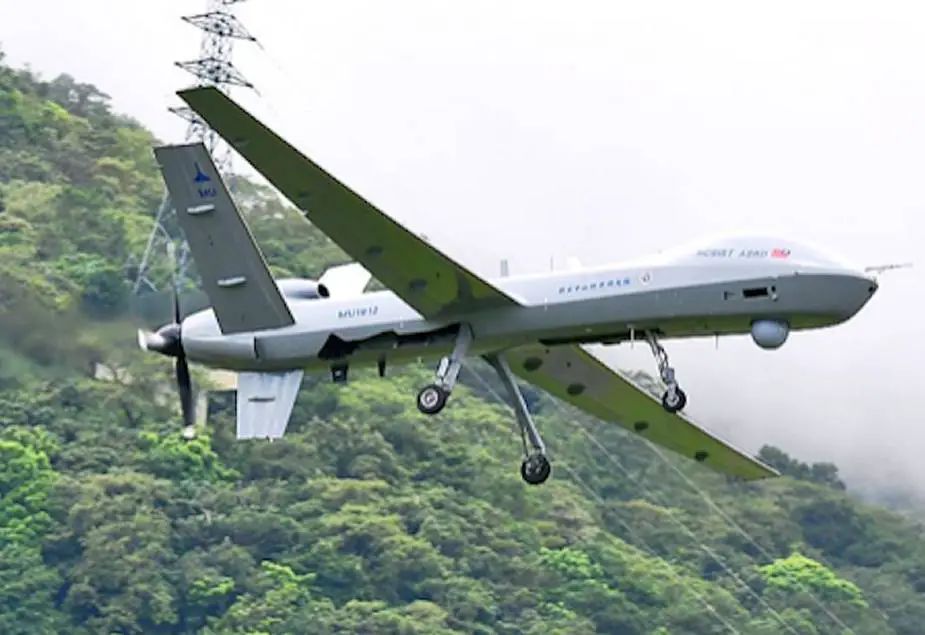Breaking news
Taiwan tests Teng Yun 2 next generation combat drone.
Taiwan completed long-range flight tests of its indigenous Teng Yun 2 drone this month, Gabriel Honrada reports in Asia Times, marking an important step in its efforts to harden its own defenses and achieve self-sufficiency in producing weapons. The drone took off from Chiashan Air Base in Hualien and flew over the sea for nearly three hours.
Follow Air Recognition on Google News at this link
 Teng Yun 2 combat drone (Picture source: Yu Tai-lang, Taipei Times)
Teng Yun 2 combat drone (Picture source: Yu Tai-lang, Taipei Times)
The test flight validated Taiwan’s advancements in drone command and control, Gabriel Honrada reports. The tests also verified the performance of the drone’s optical equipment and surveillance capabilities.
The Teng Yun (‘’clone rider’’) is a medium UCAV resembling to the MQ-1 Predator. It is compatible with the AGM-114 Hellfire. The 2019 defense budget allocated funds to build a significant number of Teng Yun systems. A prototype was exhibited at the Taipei Aerospace & Defense Technology Exhibition in 2015. An updated model with underwing hardpoints was exhibited in 2017.
In 2018, a Teng Yun being tested was observed by residents of Taitung. Taiwan’s Air Force declined to procure the platform over concerns about the reliability of its electronic systems. In response, NCSIST introduced an improved model with enhanced thrust, greater range, more payloads, an enhanced flight control system, and a triple-backup power system. NCSIST announced that the improved version of the Teng Yun - the Teng Yun 2 - would start testing in January 2020 with combat testing to be conducted in 2021. Among the Teng Yun 2 test unit’s upgrades are a US-made engine, enhanced thrust, greater range, more payloads, an enhanced flight control system and a triple-backup power system. Pictures of the improved version first surfaced in 2020. The improved version has a wider fuselage, a larger air intake, and more closely resembles the MQ-9 Reaper. General characteristics: primary Function: reconnaissance and strike UAV; powerplant: turboprop; range: >1,000km; endurance: 24 hours; ceiling: 25,000 feet.
Taiwan plans to start combat tests with the drone next month and form a combat squadron with its four MQ-9B Sea Guardian drones purchased from the US in 2020.
The development of the Teng Yun 2 and other drones is in line with supporting Taiwan’s porcupine strategy, which entails having many small assets that are highly survivable and lethal on the battlefield, Gabriel Honrada writes. This involves the use of numerous distributed, mobile and affordable anti-aircraft and anti-ship defenses that could be deployed in sufficiently large numbers that would survive China’s initial air and missile attacks and would be available to defend Taiwan. Such a strategy would require Taiwan to be self-sufficient and produce these critical weapons.
Taiwan is planning to start manufacturing its own attack drones, with a production rate of 48 units per year. Unmanned systems play a key role in Taiwan’s Overall Defense Concept, the country’s strategy for dealing with a potential Chinese invasion in a resource-constrained environment. It aims to thwart a Chinese invasion and attempts to exert political control over Taiwan by embracing an asymmetric defense posture and incorporating tactical asymmetric capabilities.


























